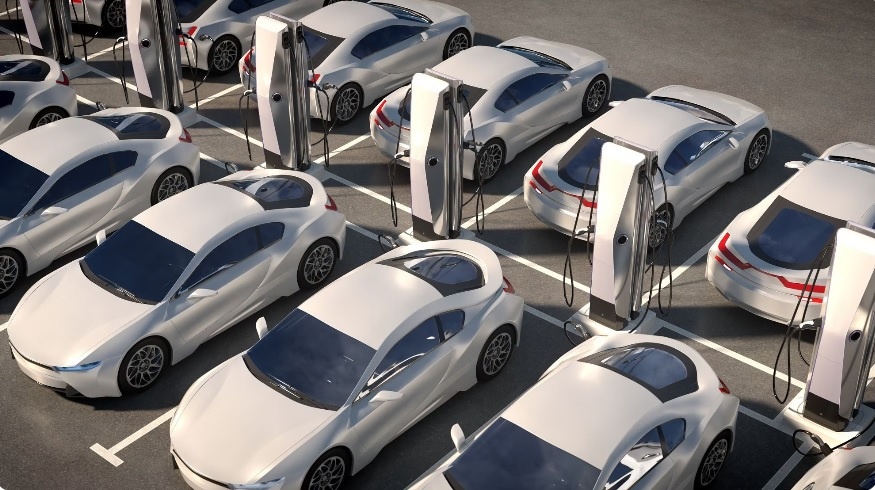Electric vehicle growth to accelerate over the longer term
Analysts at Citi predict a surge in the growth of electric vehicles (EVs) over the coming years, with global volumes expected to accelerate in the longer term. The report offers insights and analysis that point towards a positive shift in perception.
 |
According to the report, global battery electric vehicle (BEV) volume is projected to grow by 12 per cent this year, with regional growth ranging from a 1 per cent contraction in Europe to a 6 per cent hike in China and 26 per cent jump in the US. Global penetration is seen to be rising to 13 per cent this year from 12 per cent in 2023.
The authors expect a significant acceleration in growth starting from next year, aiming to push global EV adoption to 33 per cent by 2030, with the US at 37 per cent, Europe at 40 per cent and China at 48 per cent.
In China, the report remains optimistic about BEV sales growth through 2030, noting a stronger demand for plug-in hybrid electric vehicles through 2026.
Outside of China, the EV slowdown is supporting a renewed narrative around the comeback of ‘traditional’ Original Equipment Manufacturers (OEMs)- driven by slowing EV adoption, higher barriers-to-enter, and a generally stronger earnings backdrop.
Europe’s BEV transition strikes the authors as a negative in absolute for all European OEMs, with pricier branded BEVs expected to fare better financially than cheaper alternatives.
In the US, on the surface it looks like EV adoption continued to progress, with new sales penetration rising close to 8 per cent. But things look different if it considers price cuts and Inflation Reduction Act benefits needed to achieve that penetration.
Price differentials failed to disrupt the still-strong market for vehicles using internal combustion engines (ICE) or to drive EV penetration meaningfully higher, a ‘rather disappointing outcome’ that has raised questions about the industry’s ability to drive growth amid poor and declining EV profitability, increased pricing pressure and previously planned investments being pared back.
The US EV market is uneven, with trends often reflecting specific circumstances around a handful of vehicle types accounting for around 70 per cent of total sales.
Japan is expected to see a boost in BEV traction by 2025. However, by 2030 the Citi report forecasts a powertrain mix that will be dominated by hybrid EVs.
Japanese OEMs are expected to continue tailoring their BEV strategy based on the attributes of each market.
The spottier the global powertrain shift, the easier it will be for Japanese companies to leverage their multi-pathway strategy.
Citi expects Japan BEV penetration to remain at 2 per cent in 2024, reach 3 per cent by 2025 and hit 13 per cent by 2030.
In Korea, headwinds may hinder BEV adoption in the short term, but a return to growth is anticipated by 2025.
In India, 2025 is highlighted as a pivotal year for EV adoption, with expectations of significant growth by 2030.
Citi also identifies opportunities for global auto suppliers to tap into the EV market in a less risky manner, benefiting from long-term EV growth without the similar magnitude of OEM-specific risk such as pricing, product cycles, competition and other company-specific factors.
Also, given the competitive threats and faster development cycles from China-based OEMs, auto suppliers could conceivably benefit from faster tech adoption.
 | Laos encourages use of electric vehicles The Lao Ministry of Industry and Commerce has rolled out measures to promote electric vehicles (EVs), a type of vehicle that uses clean energy and protects the environment. |
 | Nissan, Honda explore partnership in electric vehicles Japanese arch-rivals Nissan and Honda said Friday they were exploring a strategic partnership in electric vehicles to face up to a "once-in-a-century" upheaval in the car industry. |
 | Electric vehicles gradually proving their superior value Vietnamese private conglomerate Geleximco is partnering with OMODA&JAECOO Automobile to strengthen its business. Tran Hung, marketing manager of the joint venture, talked to VIR’s Bich Thuy about how it will work. |
What the stars mean:
★ Poor ★ ★ Promising ★★★ Good ★★★★ Very good ★★★★★ Exceptional
Related Contents
Latest News
More News
- Global partnerships key to Vietnam’s IFC development (December 26, 2025 | 16:18)
- Vingroup pulls out of bid to invest in North-South high-speed railway (December 26, 2025 | 11:42)
- Strengthening supply chains through trade promotions and customs reform (December 24, 2025 | 14:00)
- PM orders investment model for North–South high-speed rail (December 22, 2025 | 17:43)
- LS Eco Energy to invest in Vietnam rare earth sector (December 22, 2025 | 17:31)
- Government moves to establish International Financial Centre (December 21, 2025 | 21:00)
- Vietnam's IFC to target global investment flows (December 21, 2025 | 18:00)
- Two national hospitals expand capacity with new facilities (December 20, 2025 | 09:00)
- Ha Tinh breaks ground on major Vingroup industrial and energy projects (December 19, 2025 | 18:24)
- EVN launches major power infrastructure projects nationwide (December 19, 2025 | 18:17)

 Tag:
Tag:



























 Mobile Version
Mobile Version